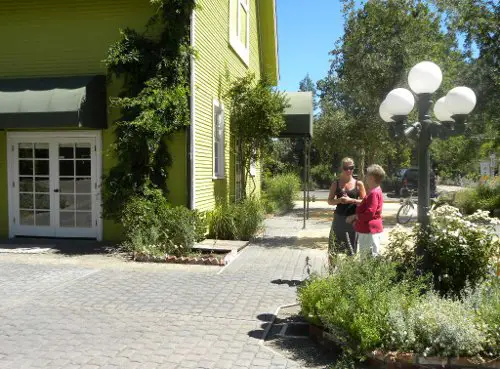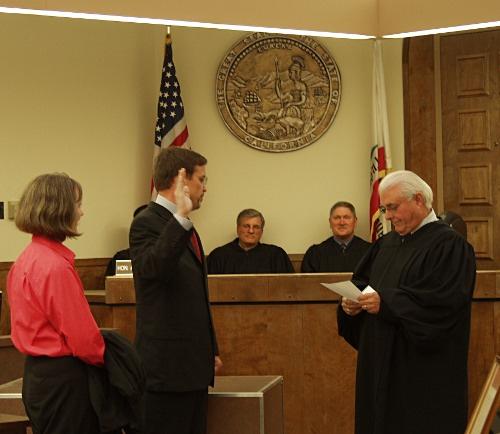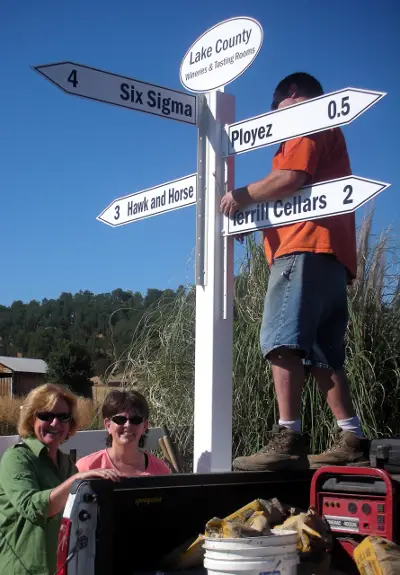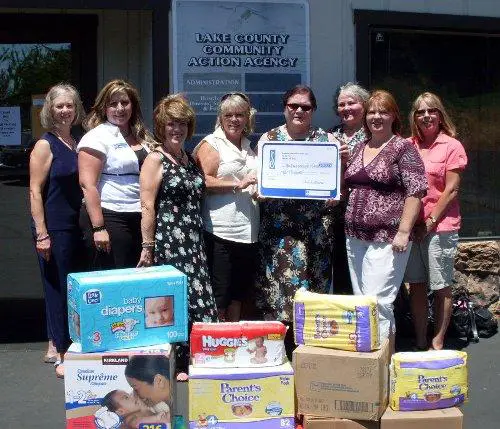- Elizabeth Larson
- Posted On
Piedmont Lumber sells Lakeport store to Mendo Mill

LAKEPORT – On Monday Lakeport's Piedmont Lumber & Mill Co. store was shut down as the facility began its transition to the ownership of another local lumber company.
Piedmont Lumber spokesman Jim Simmons said the company entered into an agreement to sell the lumber yard and retail store for undisclosed terms.
Mike Mayfield, president and chief executive officer of Mendo Mill and Lumber, confirmed to Lake County News that his company is purchasing the Lakeport Piedmont store.
“I signed a letter of intent to purchase,” Mayfield said Monday morning.
Mendo Mill, founded in 1944, has four other locations in Clearlake, Ukiah, Willits and Fort Bragg, all of which have been expanded, the company reported. The expansion of the Clearlake store, located on Old Highway 53, was completed in 2007, bringing that facility up to 25,000 square feet of enclosed retail space.
Simmons said Piedmont closed the Lakeport store Monday in order to allow for the transition to the new ownership.
Employees at the store reportedly received the word Monday morning that the business was changing hands. Mayfield said he was scheduled to meet with staff Monday afternoon to discuss the transition.
“Our goal is to retain as many staff as possible,” Mayfield said.
A total number of affected employees wasn't immediately available from Piedmont on Monday. Mayfield said Monday morning that he wasn't sure how many staffers were left at the facility.
“As soon as possible we'll reopen,” said Mayfield, who added that he considers it a matter of “weeks not months” to finish the changeover.
Longtime Piedmont owner and Lake County resident William C. Myer Jr. said in a written statement that he was pleased that many of the jobs at his former store would be saved and that the Lakeport community would continue to be served by a good operator.
He said he and his wife Vicky “are very thankful for the generous support expressed by our customers and the community we have served for over 75 years.”
The sale of the Lakeport store was the latest news from a company that Myer said has been impacted by the economy's severe downturn.
The company also has had a series of other adversities that began to become apparent earlier this year.
On March 1 Umpqua Bank, Piedmont's lender, filed judicial foreclosure actions against company properties including the Lakeport store, which was a securing property on two loans totaling more than $14.5 million, as Lake County News has reported. The company also is facing a federal lawsuit alleging it has failed to pay benefits to its union-represented workers.
Then on March 13 a fire destroyed Piedmont's Walnut Creek store. The company's Pittsburg location had been hit by a fire in August 2009, Contra Costa County Fire Protection District officials reported.
Shortly afterward, Piedmont sold its Oakland store to Economy Lumber, which became effective March 22, according to Economy Lumber officials.
Piedmont then decided to close its Calpella truss plant on March 31, the last day of the quarter, which Simmons said at that time also was a result of the economy, with the facility unable to sustain operations. The inventory from Calpella was then moved to the Lakeport store, Simmons said.
The Piedmont Rock Yard, which retails rocks, blocks and stone at a site next to the Lakeport home improvement center, is not part of the sale of the main store facility, Simmons said.
Tom Fay, the general manager of the rock yard, will continue to operate the yard and will be
one of the business’ new owners, according to Simmons.
Simmons reported that Piedmont is working with its insurance carrier and the city of Walnut Creek
to analyze and evaluate the potential rebuilding its Walnut Creek home center, but no decisions about that locations have been made.
Piedmont also recently completed the sale of its Pacheco Door division to Craftsman Collective Inc., owned and operated by Rob Myer. Simmons reported that Craftsman Collective is an architectural millwork specialist focused on doors, windows, moldings and finish carpentry.
A public auction of Piedmont’s truss manufacturing equipment and fleet of trucks, trailers and forklifts is scheduled to be held by Rabin Worldwide at the Piedmont location in Calpella on Aug. 12, according to Simmons. Details can be found at Rabin’s Web site, http://rabin.com/AuctionsAndEvents/UpcomingNew.aspx.
E-mail Elizabeth Larson at This email address is being protected from spambots. You need JavaScript enabled to view it. . Follow Lake County News on Twitter at http://twitter.com/LakeCoNews and on Facebook at http://www.facebook.com/pages/Lake-County-News/143156775604?ref=mf .

 How to resolve AdBlock issue?
How to resolve AdBlock issue? 















